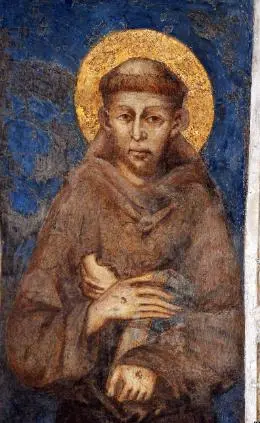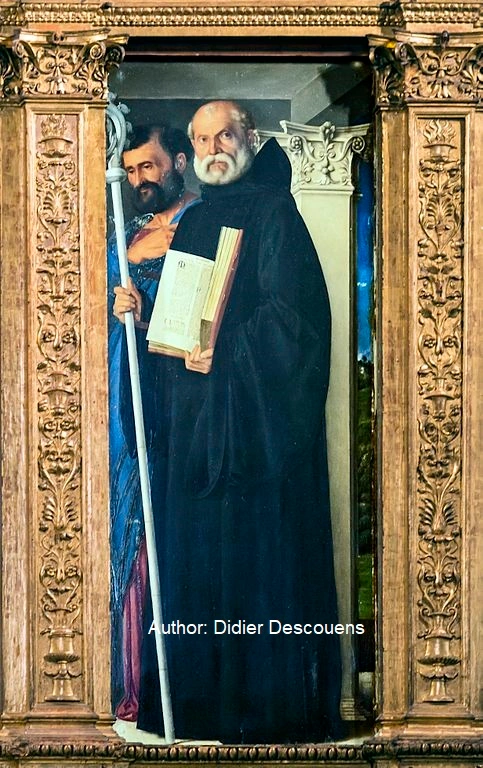
The saints who are our patrons, role models and companions
With our Ministries: FAICL Chaplaincy, Notre Dame Ministry and Footsteps of Jesus Seminary and Bible Academy

St Francis Assisi, patron saint of the Chaplaincy
Francesco di Pietro di Bernardone
The Wisdom of God’s Beloved Servant
St. Francis of Assisi abandoned a life of materialism and wealth to find his purpose in Christ.
St. Francis (1182-1226), October 4th, the day the Church honours a great friar from Assisi, Italy. He is the patron saint of the environment and animals because he loved all creatures. He was born Giovanni (John) di Bernardone, but in his infancy, his father, Pietro (Peter), began calling him Francesco (“the Frenchman”). Although many people take new names upon entering religious life, this is not how St. Francis originally got his name. In 1182, Pietro Bernardone returned from a trip to France to find out his wife had given birth to a son. Far from being excited or apologetic because he’d been gone, Pietro was furious because she’d had his new son baptized Giovanni after John the Baptist. St. Francis of Assisi is possibly one of the most universally beloved saints by Catholics, many Christians and non-Christians. Well-known for his dedication to serving God by embracing poverty, living simply, and respectfully treating all of God’s creation (from humans to animals to nature), St. Francis’ message appeals to the yearnings of the human heart for true freedom and unfailing love.

Saint Benedict of Nursia, patron saint of Notre Dame Ministry
St. Benedict Nursia, also spelled Norcia, born c. 480 CE, Nursia Italy, died c. 547, Monte Cassino; feast day July 11, with twin to his sister, Scholastica. St. Benedict was born into a noble family in Italy. He studied in Rome but left his studies to pursue a monastic life. He developed a Rule for Monastic life, including liturgical prayer, study, manual labour and community life under an abbot. The Rule of St. Benedict still inspires religious communities to this day. He was disgusted after witnessing the immoral lifestyle while in school in Rome; St. Benedict chose to live a quiet life in prayer and devotion to God. The only authentic life of Benedict of Nursia is that contained in the second book of St. Gregory’s “Dialogues.” It is instead a character sketch rather than a biography. It consists, for the most part, of several miraculous incidents, which, although they illustrate the saint’s life, give little help towards a chronological account of his career. St. Gregory’s authorities for all he relates were the saint’s disciples, viz. Constantinus succeeded him as Abbot of Monte Cassino; Honoratus was Abbot of Subiaco when St. Gregory wrote his “Dialogues.” He was named the patron protector of Europe by Pope Paul VI in 1964. In 1980, Pope John Paul II declared him co-patron of Europe with Cyril and Methodius. Furthermore, he is the patron saint of spelunkers, also known as
Benedict is the Patron Saint of Protection.
St. Benedict also offers protection against being poisoned, infectious diseases, childbirth complications, and destruction during storms and cyclones. He also obtains for sinners the grace of conversion. Patronage Against Poison, Against Witchcraft, Agriculture, Cavers, Civil Engineers, Coppersmiths, Dying People, Farmers, Fevers, Inflammatory Diseases, Kidney Disease, Monks, Religious Orders, Schoolchildren, Temptations
Benedict saw work as prayer.
Physical labour can be dedicated to God and be a means by which men and women may achieve their salvation by work, a concept in Western civilization.

Saint Thomas Aquinas
Order of Dominican priests
Thomas Aquinas, a priest and Doctor of the Church, is the patron of all universities and students.
His feast day is January 28th.
St. Thomas Aquinas was a medieval Catholic priest, theologian, and philosopher.
Patron Saint of students, Catholic schools, apologists, booksellers, chastity, philosophers, publishers, scholars, theologians
Invoked against storms
Canonized by Pope John XXII on July 18, 1323
Proclaimed Doctor of the Church by Pope Pius V in 1567
Church’s Greatest Theologians
Thomas abandoned his family’s plans for him and joined the Dominicans. He is one of the great teachers of the medieval Catholic Church, honoured with the titles Doctor of the Church and Angelic Doctor.
- Saint Thomas Aquinas Believed God’s Existence Could Be Proved in Five Ways.
- Saint Thomas Aquinas Developed “Natural Law” for Christianity
- St. Thomas Aquinas’ skillful mixture of faith and logic provides a crucial resource for Christians.
St. Thomas Aquinas was born in 1225– 1274 at Rocca Sicca, the castle of his father, Landulf, Count of Aquino, in the territories of Naples, Italy. His family was a noble one.. St. Thomas Aquinas is among the great giants of intellectuals and prayerful disciples in the Catholic tradition. During his education, Thomas entered a religious order against his family’s wishes, with his family going so far as to imprison him to dissuade him. With the intervention of Pope Innocent IV, Thomas was released, and he entered the Order of St. Dominic. Saint Thomas Aquinas was a great thinker who developed the intellectual heart of the Roman Catholic Church and whose contributions to theology and philosophy often rank him alongside Western intellectuals such as Aristotle, Cicero, and Plato.
